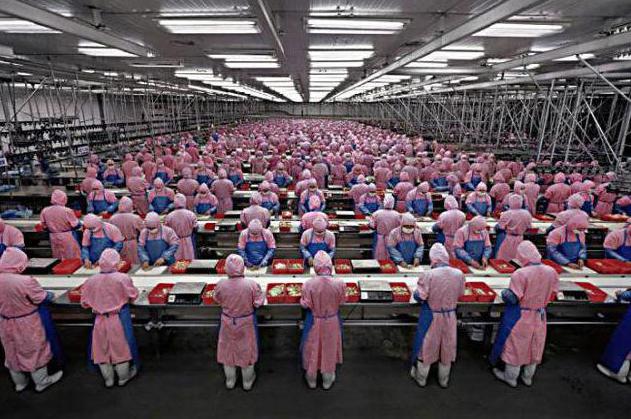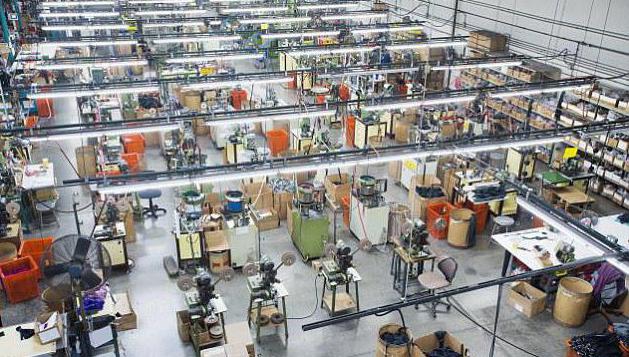The post-industrial society, which is emerging at the moment, has significant differences from the industrial one. Instead of the maximum development of industry, information, technology and knowledge are of paramount importance, and the service sector significantly outstrips the industry.

Science and post-industrial society
Now there is no such boundless faith in the omnipotence of science. The negative consequences of human activity on the planet forced to come to the forefront of purely environmental values. This is not only a relation to nature, but also to harmony, and to equilibrium in general, which are so necessary for industrial and post-industrial society to develop adequately to the existence of the planet.
The basis is the information that spawned a new type of society, called information. Instead of centralization, there is regionalization, instead of bureaucratization, democratization, disaggregation has changed concentration, and individualization has changed to standardization. These are just the very processes that the informational post-industrial society with technologies born through its emergence determines.

About Services
As mentioned above, the service sector is developing much more powerful than industry, since all people either provide information or use it, that is, they either use services or consume them. This applies to almost all professions: the teacher serves the student, the repairman - the equipment, and as a result - the client, the same happens with doctors, lawyers, bankers, pilots, designers and so on.
All of them sell their knowledge and skills - laws or anatomy, finance or aerodynamics and operating with color schemes. Unlike factory or factory workers, who were united by an industrial and post-industrial society, they do not produce anything. There is a simple transfer of knowledge and the provision of services for which customers pay.

Post-Work Virtuality
The modern type of society falls under the description of the virtual, which develops under the powerful influence of Internet technologies. This world - virtual or "possible" - became a new reality through a computer boom that swept the entire society. Virtualization - a simulation or image of society - was total, and all of its elements, of which society consists, virtualizing, significantly change their appearance, their role and their status.
The post-industrial type of society is post-economic, it is also post-labor, since the economic system has lost its original meaning as a determining one. Labor has ceased to be the basis of social relations.
Post-industrial society deprived a person of his economic essence, focusing on other, post-materialistic values. Emphasis is shifted to humanitarian, social problems, priorities are quality and safety of life, as well as the self-realization of each individual in various social spheres. Therefore, completely new criteria for social well-being and well-being are being formed as characteristic features of a post-industrial society.

Theory
The scientific tradition dating back to the Enlightenment has been embodied and developed in the same spirit as the concept of post-industrial society offers. Then public interest was associated with a phased improvement in the conditions of a person’s material life.Positivist philosophy and economic research of the 19th century dictated the most important methodological principles of this concept, laid the foundation for the periodization of social development in connection with the peculiarities of the technological equipment of production, distribution and exchange of social products.
This almost abstract idea, involving the identification of stages in the technological process, was over time richly supplemented by institutionalists in economic theory, devoted to the structuring of production sectors in society, the identification of patterns of economic development that are independent of the country's political system and social sphere. These works of thinkers from the 18th to the beginning of the 20th century became the basis on which the post-industrial development of society was built.

Models
Political, social, economic concepts of this century occupy a dominant place in the theory, on the principles of which a new life is built. The features of a postindustrial society are recognized by the presentation of a three-sector model of production, which as early as the 50s of the last century delimited the national economy into sectors.
- Primary sector - extractive industries and agriculture.
- The secondary sector is manufacturing.
- The tertiary sector is the service sector.
Thus, significant economic growth was achieved by the beginning of the 60s, but it is still not necessary to identify sectors of the economy with the stages of development of civilization. The formation of the unity of industrial society was a very popular idea in the 60s among numerous technocrats. They also considered the theory of convergence, in which, from a unified position, the opposition of the eastern and western blocs was presented. The features of post-industrial society at that time were not yet sufficiently clarified.

The birth of a concept
Professor Bell of Harvard in 1959 first used the term in the sense that it is filled today. He outlined with this concept the transition to a post-industrial society, where the society pushes the role of the industrial sector to the background by means of increased technologization, bringing science to the forefront as a productive force. Therefore, the potential of social development has increasingly become determined by the scale of knowledge and information that society has.
In the mid-70s, more private terms appeared that emphasized the most important trends in social development. The most widely used definitions characterizing a post-industrial society as informational, conventional, organized, and even programmed. The full and complex establishment of the nature of this concept could not be scientifically determined, all attempts were particular and did not become scientifically sound, although there were (and even now) an unusually large number of them: they called the post-industrial society both active and fair. This, in principle, is not true.

Post-industrial type of society
So, a comprehensive and qualitative analysis of the new situation that appeared in developed industrial countries by the 70s of the last century formed the theory of post-industrial society. Characteristics have been identified over the following decades:
- Radically accelerated technological progress.
- The role of material production is declining.
- The share of material production in the aggregate of the social product is decreasing.
- Broad development of information and services sector.
- The motives and nature of the individual's activity change.
- New resources are being drawn into production.
- The entire social structure is substantially modified.
Modern society
It as a whole is already completely post-industrial, if we consider the basic parameters proposed by the theory. The main thing is a complete transition from the primary production of goods to the production of services.Conducting research, improving the quality of life, organizing the education system are also characteristic features of a post-industrial society.
The class of specialist technicians has become the main professional group in society, where any introduction of innovations primarily depends on the quantity and quality of theoretical knowledge. In the post-industrial society, a new one has emerged - the intellectual class, whose representatives even act as political consultants, as well as experts and technocrats.

The most important parameters
Modern society not only can, but also should be considered as post-industrial, since the analysis of the logic of civilizational development is becoming more and more strengthened, which is confirmed by the theory of post-industrialization. Three eras are clearly visible - pre-industrial, industrial, post-industrial as a periodization of social progress. The parameters for making such a transition are as follows:
- The main production resource. Pre-industrial society - raw materials, primary production, industrial - energy, post-industrial - information.
- Type of production activity. Consistent processing (process) is in a post-industrial society, whereas earlier it was mining and manufacturing.
- The nature of basic technology. Post-industrial society - high technology, industrial - capital intensive, pre-industrial - labor intensive.
According to this scheme, one can formulate an old provision on three societies, which assumes the base of a pre-industrial society on the synthesis of man and nature, industrial - on the transformation of nature, and modern post-industrial society is based on interactions between people.
Becoming a concept
It all started with assessments of phenomena that radically changed the Western world. And to this day, this theory retains its materialistic character, studying concrete facts and trends. The concept of postindustrial society presents empirical material as primary with respect to theoretical postulates and general methodological constructions, and this differs from other social theories that Marxists adhere to.
However, it should be noted that this doctrine is presented in a number of aspects that are overly objectivistic, since it does not provide tools for analyzing the causes of just such a development, which came to the formation of first industrial and then post-industrial society. Considering this transition, rather as a given, rather than a process with contradictions and internal logic, only the social transformations of modernity are explained, not using the results obtained to build a global theory in sociology, which gives some superficiality to the scientific research in their conclusions and positions.
